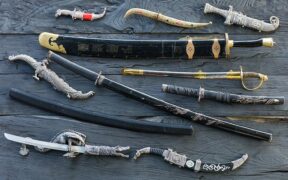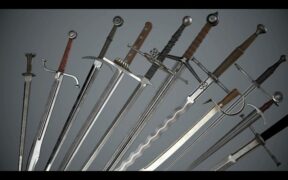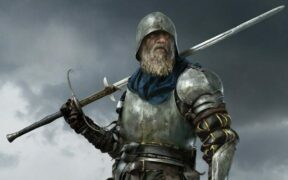Our content features commercial links to our products, committed to transparent, unbiased, and informed editorial recommendations. Learn More
European Swords: 18 Types & Where to Buy Them
NO AI USED This Article has been written and edited by our team with no help of the AI
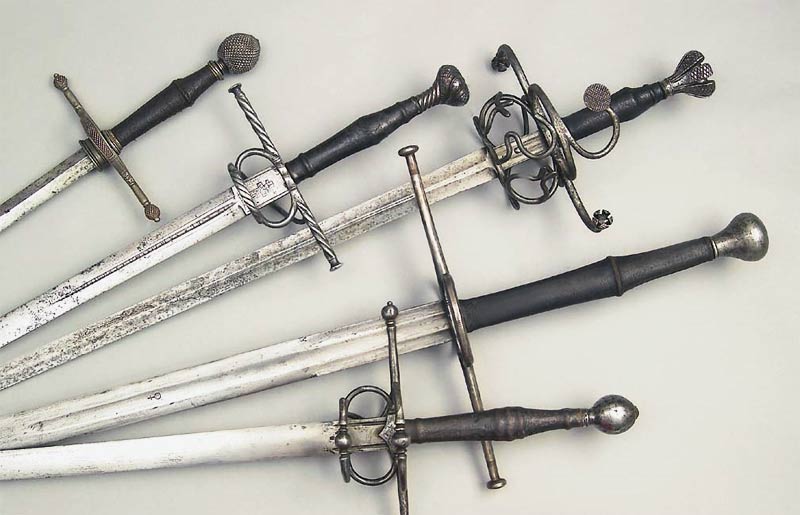
For sword aficionados, adding to their collection involves first understanding the development and history of the sword over the centuries in Europe. When we think of European swords, we often think of a knightly sword – the type of sword used to slay a dragon in mythical times.
Recently, some of the European swords from medieval times are enjoying a renaissance in the buyer’s market online, thanks largely to the popularity of TV shows such as Game of Thrones and Vikings that feature epic fight scenes. In this article, we rounded up some of the most popular European swords, as well as a few tips on how and where you can acquire them.
How Are European Swords Named?
Some of the names we give to European swords originate from the time they were first made or to describe what they do. Others have been given names retroactively by historians and sword collectors looking to place the sword in the correct historical context. An example of a popular modern classification system of the European medieval sword is the Oakeshott typology which we will discuss more in depth near the end of the article.
Examples of descriptive names given to the sword at the time are bastard sword (of dubious origin) and “two-handed” (requiring two hands to wield it). These names arose during England’s ‘golden age’, known as the Elizabethan period during the reign of Queen Elizabeth I from 1558 to 1603, extending into the early 15th century.
So as not to confuse ourselves with antiquarian names, sword origins, and fictional swords, let’s start by looking at the most popular European swords classified based on how the swords were held.
Two-Handed European Swords
A popular legend is King Arthur drawing the sword Excalibur from the stone to prove that he was the rightful heir to the British throne. It was first written by Sir Thomas Malory at the end of the 15th century who referenced 11th century folklore in England. Based on the legend, King Arthur used two hands to withdraw the medieval knightly sword Excalibur, suggesting a certain strength that is required to wield the sword. In Europe, some of the popular examples of large swords requiring two hands to wield are:
The European Longsword
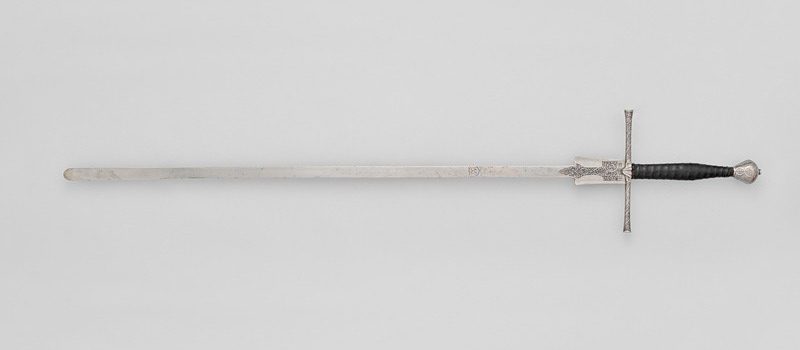
The European Longsword is perhaps the original longsword but with a cruciform hilt. With a handle that looks like a cross, this sword is thought to originate from the knightly sword often seen in local folklore as mentioned above with King Arthur around the 15th and 16th century in England.
Also known as a crusader sword, it is a symbol of authority. It was first produced in 1100 and was therefore around during the medieval and Renaissance periods. The longsword features a double-edged blade that is around 1m in blade length, and it weighs just over 1kg.
The Zweihänder
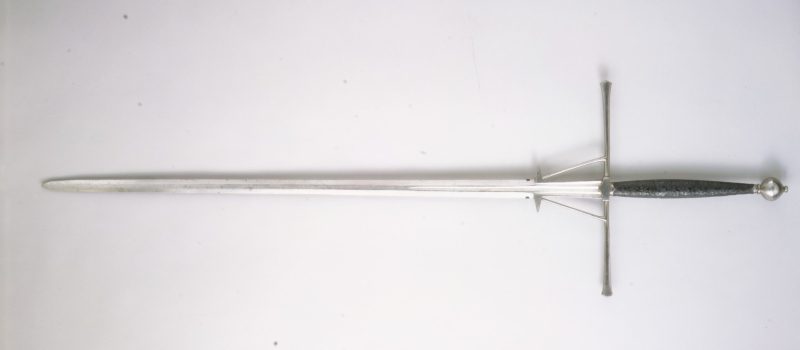
The Zweihänder was also known as Beidihänder (“both-hander”), Doppelhänder (“double-hander”), Bihänder, or Bidenhänder. Compared to the European longsword, the Zweihänder was generally a little longer (110cm) and weighed a little more (up to 1.5kg). In other parts of Europe, this sword had different names and was known as espadón (by the Spanish), montante (by the Portuguese), and spada lunga (by the Italians). All these names describe the same bladed sword that was around from the 12th to the 16th century throughout Europe.
Greatswords
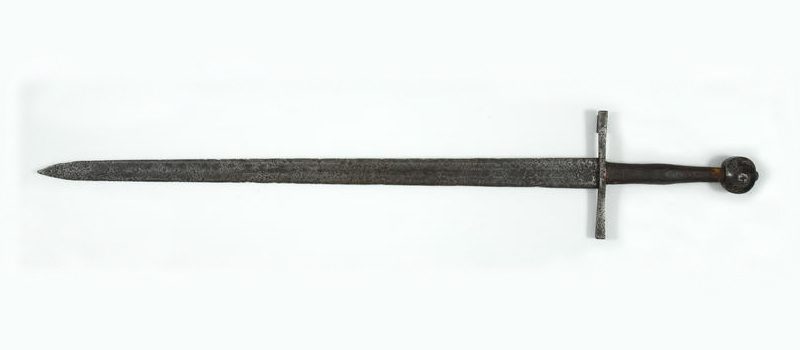
Another double-handed swords of the sixteenth century, a greatsword can refer to the arming swords of knights, as well as the spatha (a broadsword that is thin, pointed, and double-edged) of the Vikings, Romans, as well as the French and German. Another name for them is Grans Espees d’Allemagne (meaning “great swords of Germany”). They are generally considered to be oversized swords, featuring hilts of between 17 cm to 23 cm in length.
Broadsword

In Europe, the broadsword was used in battles throughout the 6th to 16th century. These double edged swords, when used by knights wearing full armor on horseback, are equivalent to 10 to 15 normal soldiers. Used for cutting and slashing, the term broadsword describes a group of swords with similar characteristics. From the 14th to the 19th centuries, broadswords included the Claymore and two other single handed swords: the basket-hilted sword, and the Saber sword (both are classified under single handed in this article).
The Claymore
Meaning “great sword” in Gaelic, the Claymore adds some nifty design features to the original longsword by having forward-sloping quillons. A quillon is the bar of metal that is at right angles to the blade, which helps form the cross guard. By having the quillons forward shaping, it is similar to the earlier basket-hilted sword where a metal basket cleverly protected the hand.
Mainly used by the Highland Scots around the 15th to the 16th century, the Claymore has a blade length of between 100cm – 120cm and a weight of up to 2.8kg. This sword also has a prominent pommel (meaning “little apple”) that acts as a counterweight to the blade and prevents the sword from sliding out of one’s hands.
Single-Handed European Swords
“Single-handed sword” is a term made popular by Sir Walter Scott, the Scottish historical novelist. The use of this term first came up around the 19th century to distinguish the variety of swords that require only one hand to use from the two-handed thrusting weapon. Some popular examples of single-handed European swords are:
Broadsword
Broadswords were previously mentioned above. However, there are two types of broadswords that are considered single handed. These include:
Saber
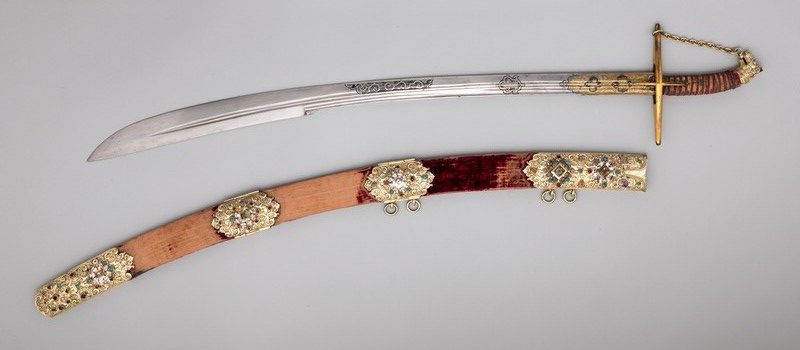
The sabre is a sword used in modern fencing where thrusting and cutting with the back of the blade as well as the cutting edge results in the scoring of points. This is unlike the foil and épée where points are scored for making a hit only with the tip of the sword. Historically, it was a heavy military sword often used by cavalry troops. By the 20th century, the military saber was relegated to a ceremonial role.
Basket-Hilted Sword
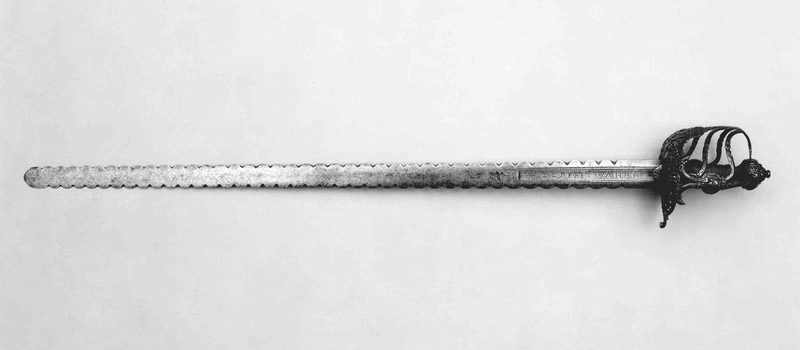
This sword is of the modern early era characterized by the basket shaped guard that functions to protect the hand of its wielder. Developed in the 16th century, the basket-hilted sword rose to popularity in the 17th century and maintained widespread use through the 18th century. Generally used as a military sword, arms historians and collectors defined it to be a true broadsword due to its double-edged blade. Used for cutting and thrusting, this sword led to the inspiration of many other swords such as the Heavy Cavalry Sword, Gothic Hilted British Infantry Swords, and more.
Viking Swords
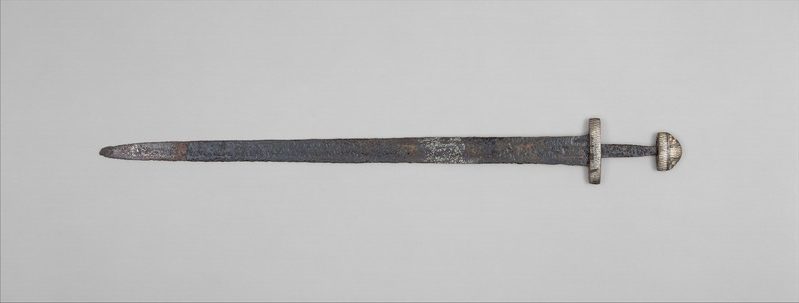
The Viking sword was used in North Western Europe. Despite its name, it was not exclusively limited to the Vikings as it was used by others as well. Developed from the Roman spatha, these swords had welded patterns which gave the blade extra strength. Generally made of springy iron with a hard steel edge, the Ulfberht subset used steek of higher purity and carbon content. The blades of these swords range from 71 to 84 centimeters. Earlier versions have a single wide deep fuller while later versions have multiple narrow fullers.
Falchion
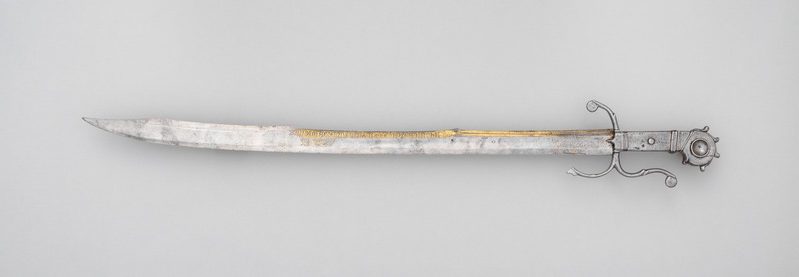
This broad bladed sword was used in the Middle Ages around the 13th to 16th century and had a convex cutting edge with a sharp point. With a design reminiscent of the Chinese dadao or Persian scimitar, it combined the versatility of a sword with the power and weight of an ax. Measuring 37 to 40 inches in length and weighing about 1 to 2 pounds, most featured a quillonned crossguard for the hilt. Unlike its double edged counterparts, there are very few Falchion swords that have survived to the present day.
Gladius
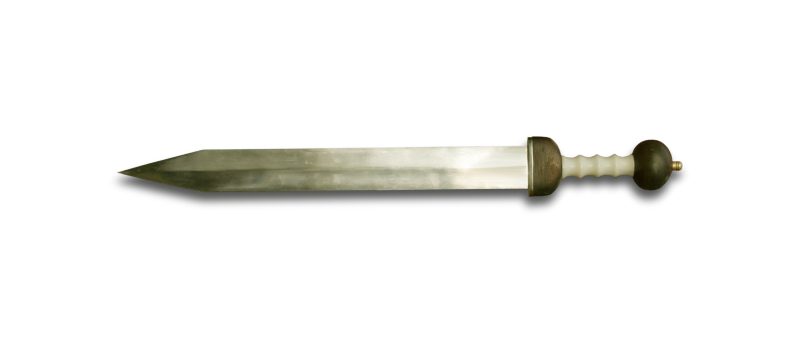
This is the sword of ancient Roman foot soldiers – the kind you’d see in an Asterix comic. The word “gladius” is thought to originate from the Celts who carried a similar sword known as the Gladius Hispaniensis. This word also inspired the term “gladiator”, swordsmen who carried the Gladius sword. The Gladius swords were roughly two feet long and were used around the 3rd century BC to the 3rd century AD. These swords were great for stabbing and for piercing armor.
Rapier
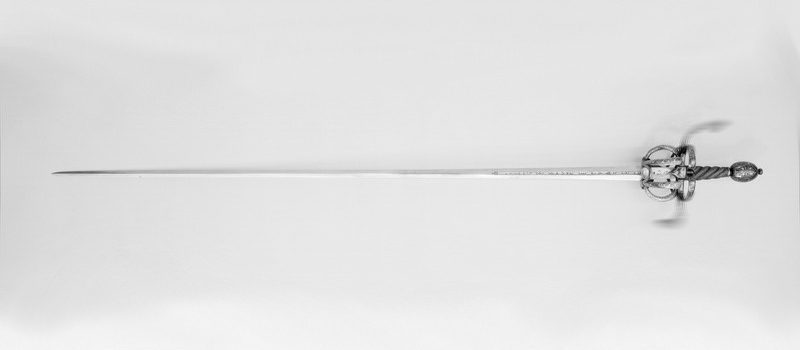
Originating from Spain in the 1500s, the hilt of this sword is complex and protective. Picture The Three Musketeers and you have an idea of a rapier sword. While its blade can be single or double-edged, it is always a straight blade.
The rapier was used by civilians who enjoyed dueling and as a sidearm for military use throughout most of Western Europe in the 16th and 17th centuries. Rapiers are considered to be thrusting swords that are not great for cutting. Rapiers were used throughout Europe in conjunction with small round shields known as bucklers. Daggers and cloaks were also common ‘extras’ when fighting with a rapier sword.
Cutlass
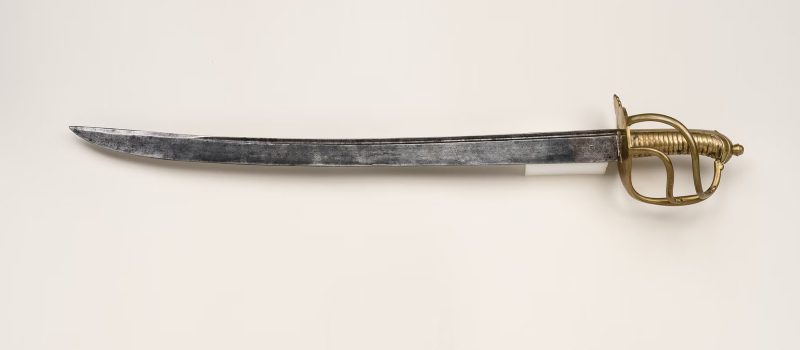
Also known as a slashing sword, a cutlass is a short and heavy curved sword that is most commonly associated with sailors and pirates. Cutlasses would often feature hilts with a basket-shaped guard. Generally a slashing sword, its short length and curved wide blade was very effective for fighting, clearing brush, and to cut sugarcane or even wood. Its versatility was appealing to sailors as it was efficient in close quarters fighting and served as a great tool.
Small Sword
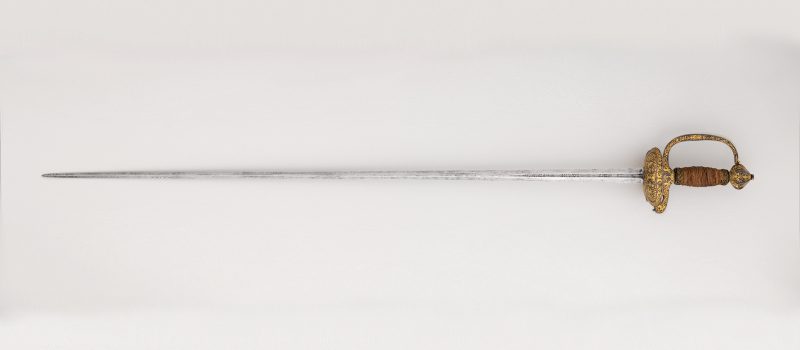
This sword carried on where the rapier left off in terms of being a fashion accessory in 18th century Europe. Other names for it include the dress sword or court sword. While it was designed for thrusting, it was often more just a status symbol than anything else. If you wanted to be considered a gentleman around this time, you’d carry a small sword with a blade length of anywhere between 60cm to 85cm.
Today, the small sword is often on shows as part of a court uniform. It is also important in the history of European swords for its role in developing the techniques employed in the French classical school of fencing. The small sword remains a powerful thrusting weapon to this day.
Hanger Sword
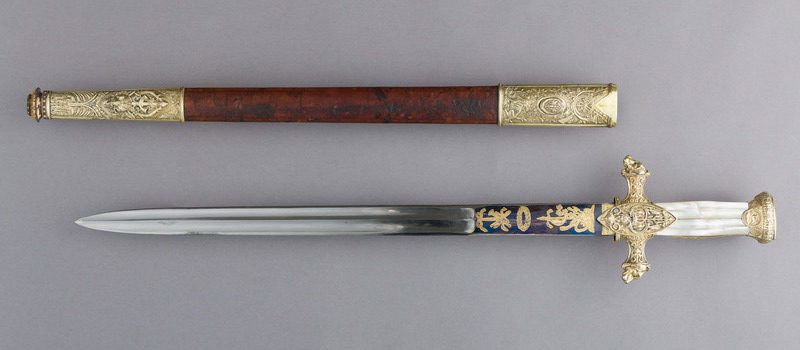
This simple cutting sword also goes by the name of hunting sword or hunting hanger. Popular in the 17th and 18th century in Europe as an infantry sabre, it was also carried by European and American gentlemen. It featured a slightly curved blade, a plain knuckle-bow, and a plain grip. Great for close combat, it also serves as a supplementary weapon while hunting.
Épée
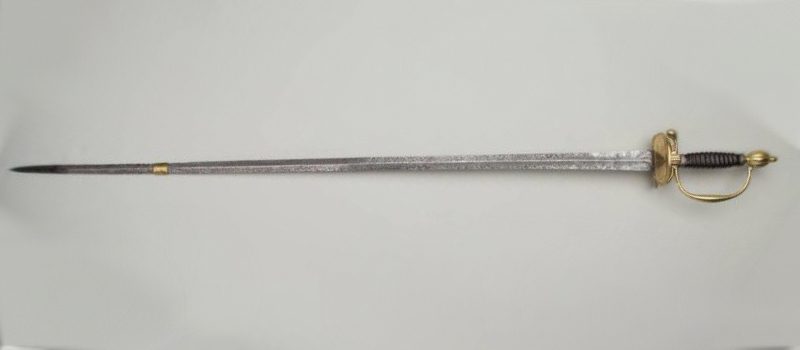
The épée is the largest and heaviest of the three weapons used in fencing, the others being the foil and the sabre. It has a blade that measures 90cm from the guard to the tip. The épée became popular in 19th Century Europe when life became more valuable, and duels were fought until “first blood” instead of death.
The épée has a handle length of 20cm and derives its name from the Latin word “spathe” which was also a straight and long sword used in the Roman Empire up until the 6th century. The Viking swords are derivatives of this sword as well and are simply dubbed spatha swords.
Backsword
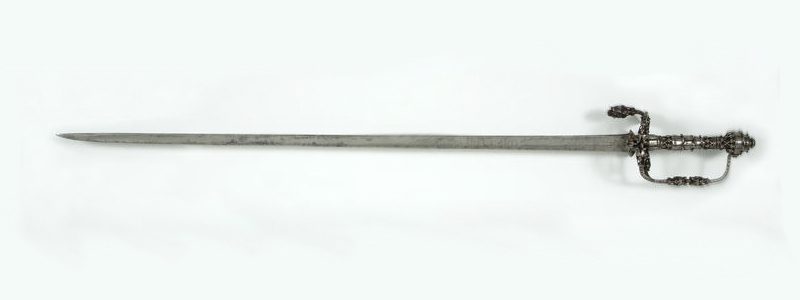
The backsword has a curved blade and is often associated with the cavalry of Central Europe, who were called hussars. It was used extensively in the Ottoman and Napoleonic Wars. This single-edged blade has a triangular cross-section that gives it its name: it has a “flat back” opposite its cutting edge. Around the 14th century, the backsword was fitted with a knuckle guard. Its “false edge” or the part behind the tip would be sharpened to aid thrusting attacks and give it a sharper finish.
Greek Machaira
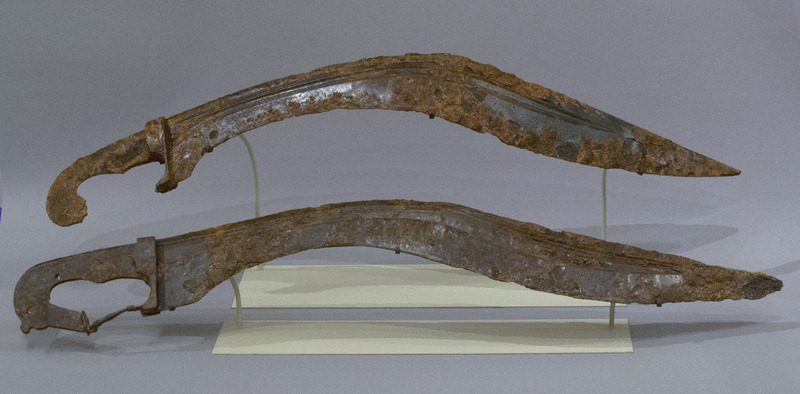
The Greek Machaira or makhaira is a bladed weapon from Ancient Greece with a single cutting edge that could almost be deemed a large knife. With a name that means “dagger” or “short sword”, the name of this sword is often used interchangeably with Kopis and the distinction is not entirely clear based on ancient texts. Designed to cut rather than thrust, the machaira swords come in various shapes and sizes deepening on the region. Nowadays this sword survives as the kukri chopping knife, a cutting tool in South Asia that is also the national weapon of Nepal.
Xiphos
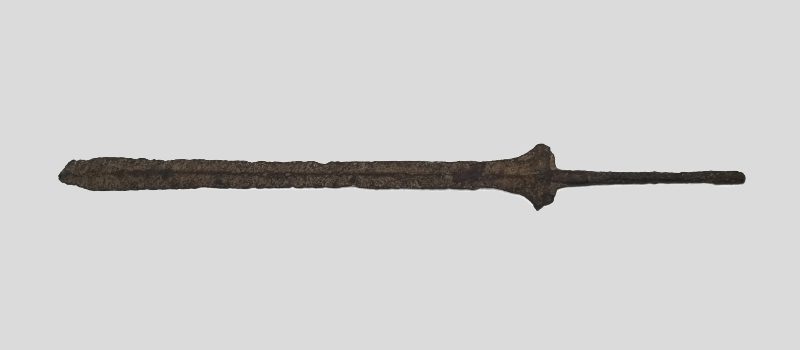
The Xiphos is another straight shortsword used first by Greek armies. The classic blade has a blade length of 50 to 60 cm long while Xiphos swords used by the Spartans were shorter, around 30 cm. This was a secondary battlefield weapon for close combat and would often hang from a military belt (baldric) under the left arm. The leaf shaped design of the sword makes it suitable for cutting and thrusting.
[relatedview related_url=”https://swordis.com/blog/spartan-sword/”]
Hand and a Half Sword / Bastard Sword
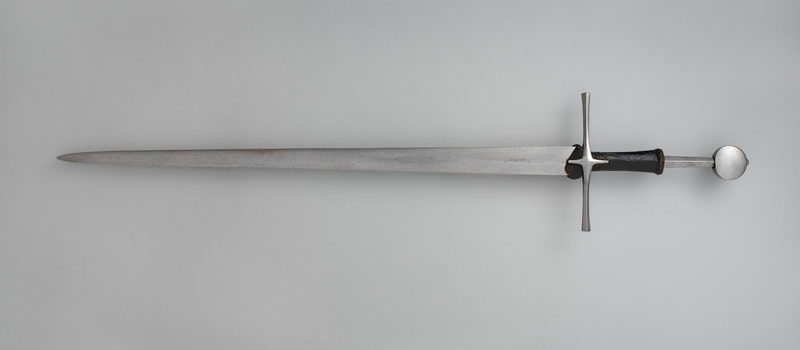
A “hand and a half sword” was also colloquially known as a bastard sword and allowed a two-handed grip when necessary. The length of the blade falls between a longsword and shortsword, measuring about 22 to 30 inches. This sword is very versatile as it can be used with one hand, so the other hand could hold a shield. It can also be used with two hands to enable better control of the weapon through thrusts and jabs that are more powerful. Its versatility has contributed to its popularity throughout history.
The Influence of The Japanese Katana on The History Of European Swords
It’s simply not possible to discuss European swords without looking at the Japanese katana as it has had a huge influence on elevating the craftsmanship of swords. In fact, it is a popular debate amongst sword collectors as to which is the better sword: the European longsword or the katana. Today, the term “katana” refers to any single-edged sword from around the world. If you are a collector, it is worth checking up on the local legislation that applies to the bladed sword you may be hoping to buy.
Martial arts practitioners in the United Kingdom, as well as historical re-enactors, can own katanas – but under the Offensive Weapons Order of 2008, it is illegal to own a curved blade that is over 50cm in length. This was on account of an increase of samurai sword attacks in the UK in the early 2000s. However, traditional hand-forged katanas can still be bought and sold online.
Classifying Medieval Swords: Oakeshott Typology
First, there were the Celtic longswords, then came swords with pommels offering a better grip while the cross guard improved the longsword’s defense even further. Amongst all these developments and throughout the history of medieval swords, it quickly became confusing when it came to acknowledging which sword originated where, and what the correct name is.
This is where the Oakeshott typology comes in. This is a modern way to define and classify the medieval sword based on its physical form rather than where it originated from. Ewart Oakeshott was a British collector and amateur historian who did enough research on medieval swords to determine that various wars and trades throughout Europe had complicated the simple linear history of medieval swords.
Oakeshott’s 13 medieval sword types are defined by the set physical features of the blade, including length, taper, cross section, and fuller characteristics. Oakeshott’s sword descriptions are also unique in that the hilt is considered the top of the sword while the point is the bottom. This is on account of how the sword would need to point towards the floor if one were to read a sword’s inscription properly.
If you find a sword that is classified with the word “Type” preceding a Roman numeral (X through to XXII) then you are dealing with a sword that has been classified according to Oakeshott typology.
Conclusions on European Swords
The development and history of swords in Europe is inextricably linked with the wars that were fought for territory in the name of gods and religions that defined European cultures for centuries. Although European swords are fascinating artifacts of a bygone era, collecting them to keep on our mantelpiece while watching the best swashbuckling period dramas of the day are a great way to honor the continent’s history.
